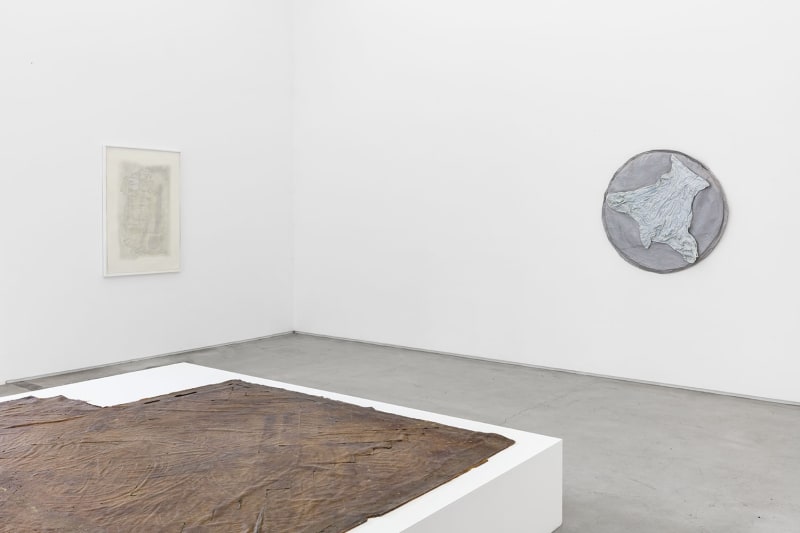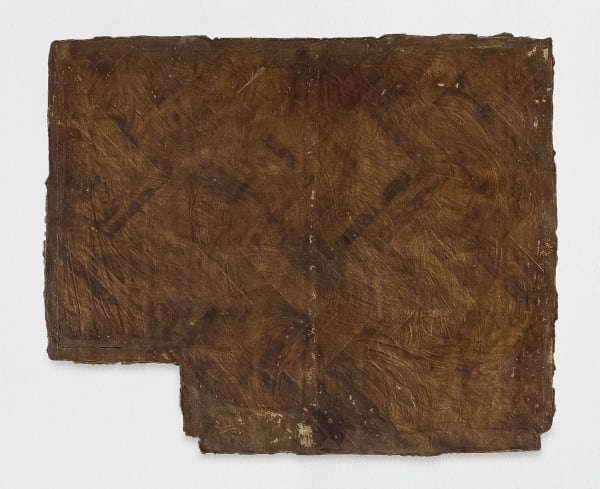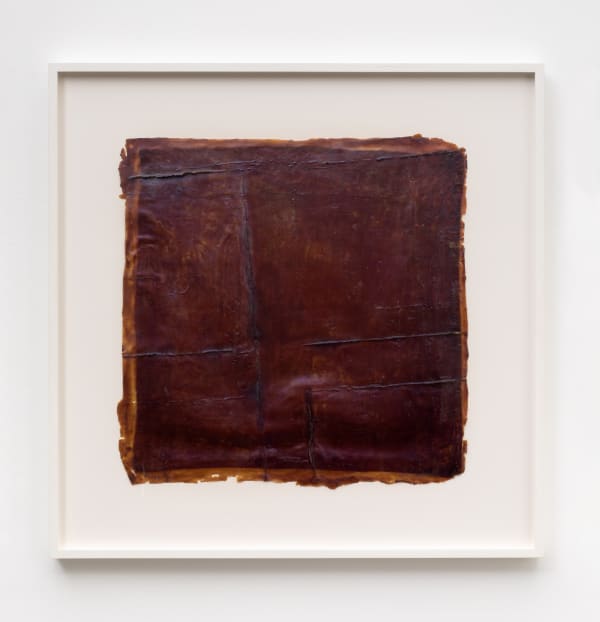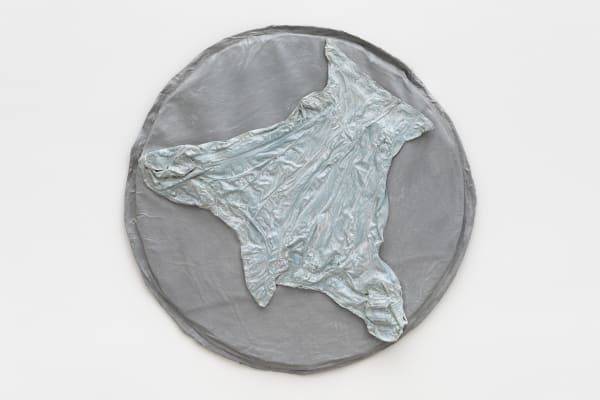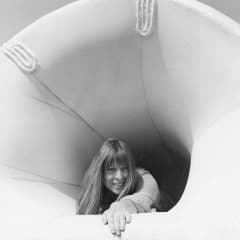Memory as Architecture, Memory as Skin Heidi Bucher
We paste the rooms and then listen. We observe the surface and coat it. We wrap and unwrap. The lived, the past, becomes entangled in the cloth and remains fixed there. Slowly we loosen the layers of rubber, the skin, and drag yesterday into today.
–Heidi Bucher
It is with great pleasure that Mendes Wood DM presents its first exhibition of Heidi Bucher’s work. Due to these singular times that we are living in, the show will, for the first time in our programme, articulate itself in two iterations, an online presentation that will be continued with an exhibition at our São Paulo gallery space. The show brings together a selection of works from Bucher's most notable series, the Skinnings, produced by the Swiss artist from the end of the 1970s until 1990. Bucher's interest in exploring the possibilities of organic abstract forms started in the late 1950s when the artist was making abstract collages with silk. However, until her breakthrough works in latex, her research still flirted with certain aspects of what would later be known as Minimalism, by removing the tangible presence of the artist from the work. After experimenting with more collage in the 1960s, Bucher embarked on a new line of enquiry and began developing her Skinnings series, a study into the relationship and boundaries between architectural structures and the human body, using latex as an artistic medium that would end up playing an iconic role in her practice. The artworks of this period, considered by many to be the pinnacle of her work, were recently featured at the 57th Venice Biennale.
The show presents various latex castings from this period, including architectural elements from her studio in Zurich, as well as the abandoned mental health institute of Bellevue, and her house and studio in the Grand Canary islands. Alongside this seminal series of works, this show also presents Bucher’s Bodyshells video project of 1972, conceived in California a few years before the artist moved back to Zurich after a long sojourn in the US. This project, in which Bucher was already raising important questions about the body and its relationship to its surroundings, can be seen as a sort of conceptual starting point from which she then developed her Skinnings.
Latex and Architecture
Bucher started making these works in Switzerland after returning from the US and Canada in 1975, where she had been living her husband, the artist Carl Bucher. Perhaps pivotally to her practice, her return coincided with the very recent enfranchisement of Swiss women, who were only given the vote in 1971.
Bucher saw the often gendered architectural spaces that she inhabited and interacted with as more than just bricks and mortar. They were receptacles of memory and experience that were very much a living, breathing part of her life. By “casting” these spaces in latex and then “skinning” them by peeling the latex membrane off gradually to reveal an impression of the architectural features of the space, she sought to capture the essence of a room, or an entire building, that had played a significant role in her life, like her grandmother’s home Ahnenhaus, in Obermühle, for example, or the floors of her various studios.
It is fascinating to note what has been considered to be one of the key contradictions that makes Bucher’s work so radical. As a child, she often shadowed her father, a construction engineer, as he researched and carried out architectural projects. The ephemeral qualities, tonalities and implications of latex and textiles as materials, coupled with the memory-driven, and at some points nostalgic nature of the spaces she chose for her works, caused her practice to be thought of as stereotypically “feminine”. The tension is provided by the fact that Bucher’s chosen vehicle of expression, architecture – with its mathematic precision, its lines and right angles – has historically been a stereotypically “masculine” pursuit. At the first glimpse, the organic quality of these works almost belies the intent, the meticulous analysis and planning with which Bucher approached them. The precision of her projects, which were planned and sketched beforehand, conjure an image of her as a geographic explorer mapping newly discovered territories.
By making skins from her childhood home, Bucher wasn’t just asking how we inhabit spaces but how they inhabit us; how we carry them with us, even after we have left them. The notion of ‘home’ is not something that can be so easily shrugged off.
– Amy Sherlock for Frieze Magazine, March 2014
Bucher carried on using this technique throughout her career. By mapping the corners of houses, details of floors, windows, and doors, the artist explored notions of limitation and domesticity – these skins seem to replicate both the appearance and the essence of all these bodies. By marking the outlines of windows and doors, using them almost like footprints, she brought to her work an almost archeological rigour that allowed her to preserve and recreate the history of places while letting them fade.
Bucher's choice of location was not always emotionally-driven in a personal sense. She devoted a long time to documenting, mapping and "skinning" the Bellevue mental health institution, close to her home and on the border between Switzerland and Germany. The institution, which was already closed by the time Bucher discovered it, was once one of the leading centres in Europe for avant-garde treatment at the turn of the 20th century. It was there that Anna O, the patient whose case first appeared in Sigmund Freud and Josef Breuer's now-famous Studies on Hysteria (1895), was sent for treatment. The actual building in which male doctors tested and developed the traditionally hyper-masculine school of psychoanalysis must have proved an irresistible draw for Buchers practice in more ways than one. Bucher's own studio, of course, was worthy of memory, and she created traces of it as early as 1976, when she made her first Skinnings in Zurich, in her studio which she called Borg, and as late as 1990, when she used this technique in the Palacio Ico in Lanzarote, in the Canary Islands, where she also lived and worked for the last two decades of her career.
Bodyshells, Venice Beach
While she was living in California, before making her return to Switzerland, Bucher authored an important project titled Bodyshells, in collaboration with her husband Carl Bucher, in which she explored the relationship between the human body and its surroundings, articulated by a series of wearable sculptures that she had created especially for the project.
This work was first presented at the Los Angeles County Museum of Art in 1972 and is very much emblematic of her experience on the west coast of the US, during which time she was exposed to Land Art and to Minimalism, both radical new artistic currents that were finding a growing audience at home and abroad. While perhaps not influenced directly by them, Bucher was certainly inspired to take her work to daring new places after being immersed in the freedom of the avant-garde movements there.
During that period of her life, Bucher was rediscovering the potential of pure mother-of-pearl pigment applied to her works. As early as the 1950s she had already experimented with the idea by incorporating crushed mother of pearl seashells in her pieces. For the Bodyshells project, the artist applied the luminosity of this material to her wearable sculptures, turning these bodies into shells. The seed for Bucher's interest in corporeality, skin and metamorphosis blossomed when she started her Skinnings, indeed the occasional use of mother of pearl on the latex works created an ethereal, translucent, luscious surface which lends itself perfectly to the visual metaphor of a room “shedding” its memories as a snake sheds its skin. The Untitled work is one of the outfits from the Bodyshells video from 1972, already coated in mother of pearl pigment, which Bucher then applied not only to a number of her architectural works but also to a different group of works that incorporated women's clothing. Perhaps her most well-known works from this group are the Libellenlust (Dragonfly Joy) series in which, performing herself, clothed in a latex and mother of pearl dragonfly costume, Bucher further explored these ideas of transformation and metamorphosis.
Heidi Bucher (1926-1993) Winterthur, Switzerland. The artist distinguished herself particularly through her legendary "mouldings", focussing and exploring the architectural space and the body through sculpture. It is a transformative and poetic work, that deals primarily with private spaces and belongings, architectural fragments from mostly the 19th century, feminism, domestication and the individual or collective experiences and memory. Heidi Bucher’s artistic legacy, is concurrently a visionary and aesthetic testimonial, as well as a conceptional liberation from an old, patriarchal affected world.
Her work is included in numerous museums and private collections worldwide, including MOMA Museum of Modern Art, New York / MET Metropolitan Museum of Art, New York / Guggenheim Museum, New York / The Hammer Museum, Los Angeles / Centre Pompidou, Paris / The Israel Museum, Jerusalem / Kunsthaus Zürich / Kunsthaus Zug / Kunstmuseum Lucerne / Kunstmuseum Winterthur / Migrosmuseum für Gegenwartskunst Zürich
-
 Heidi Bucher, Obermühle, Parquet room nr. 9, 1980-82
Heidi Bucher, Obermühle, Parquet room nr. 9, 1980-82 -
 Heidi Bucher, Untitled, 1979
Heidi Bucher, Untitled, 1979 -
 Heidi Bucher, Untitled (Parquet piece), ca. 1985
Heidi Bucher, Untitled (Parquet piece), ca. 1985 -
 Heidi Bucher, Psychiatrische Anstalt in Kreuzlingen - Sanatorium Bellevue "Fenstertüre", 1988
Heidi Bucher, Psychiatrische Anstalt in Kreuzlingen - Sanatorium Bellevue "Fenstertüre", 1988 -
 Heidi Bucher, Dress, 1978
Heidi Bucher, Dress, 1978 -
 Heidi Bucher, Untitled, n.d.
Heidi Bucher, Untitled, n.d. -
 Heidi Bucher, Bodyshells, Venice Beach, 1972
Heidi Bucher, Bodyshells, Venice Beach, 1972
